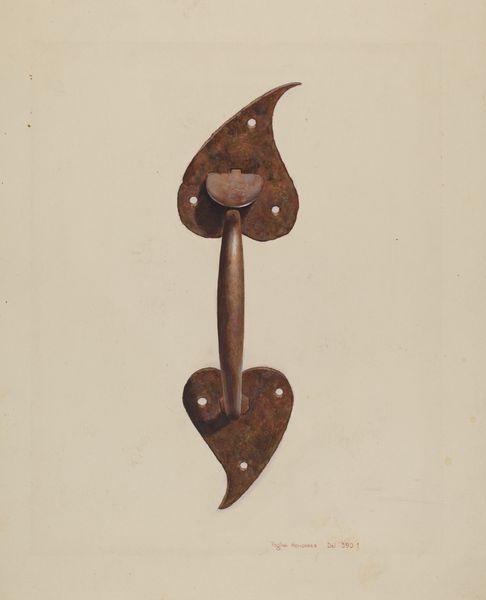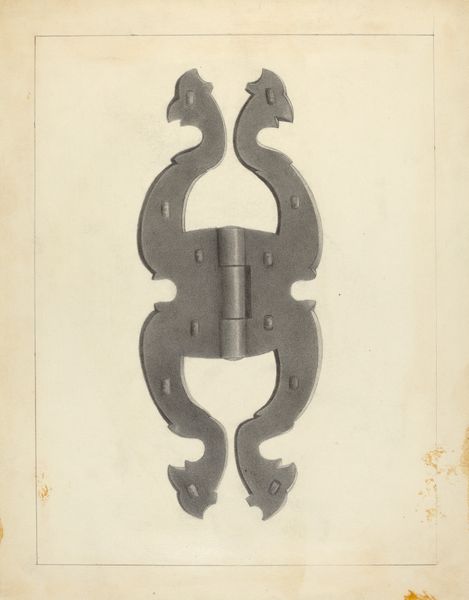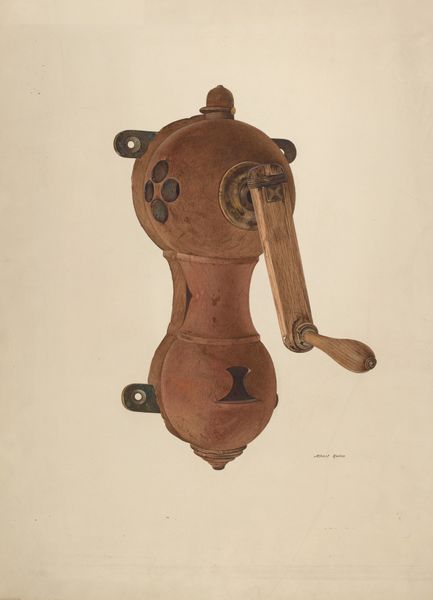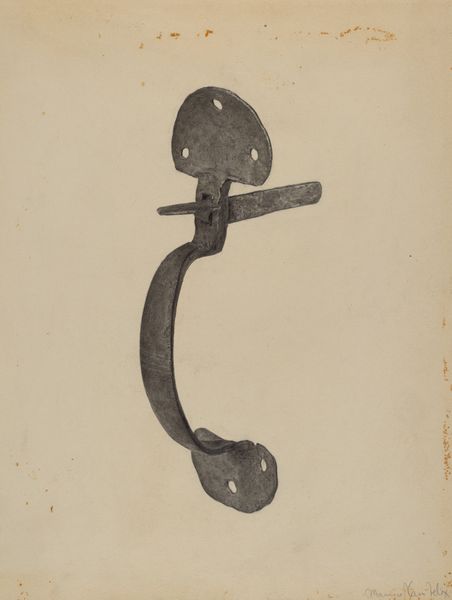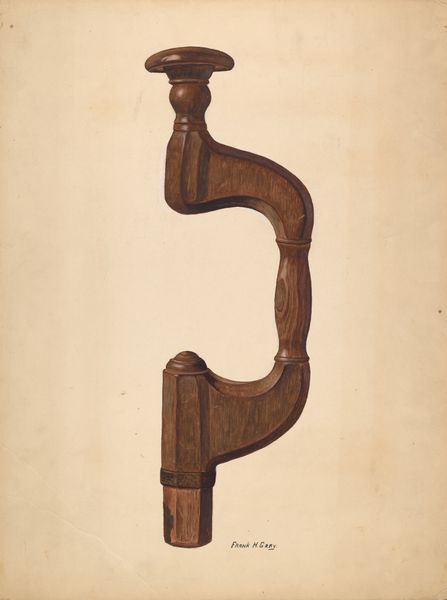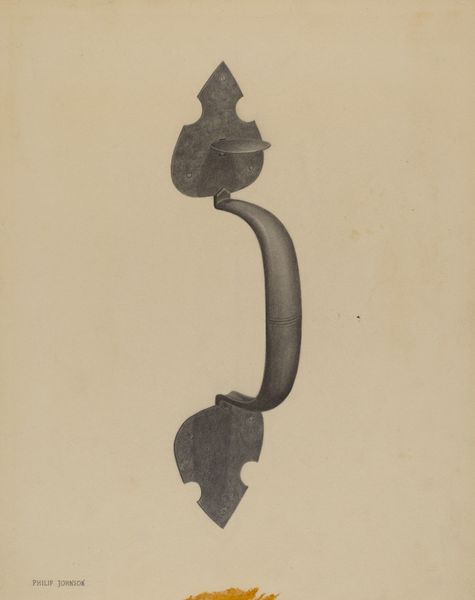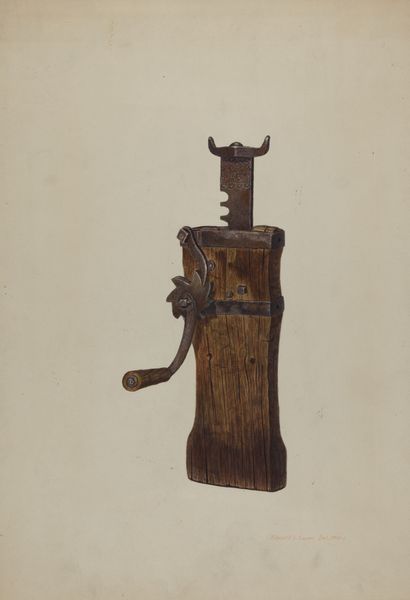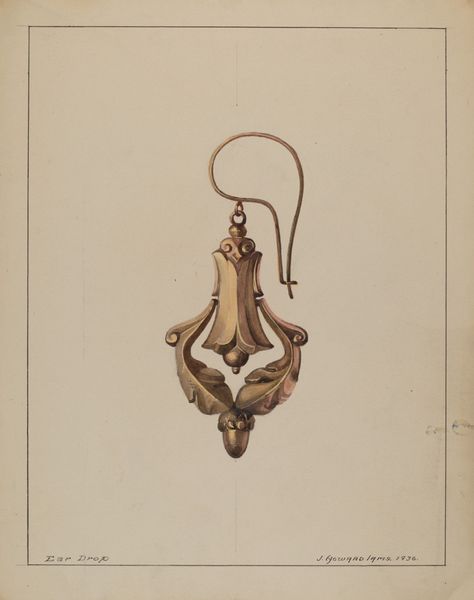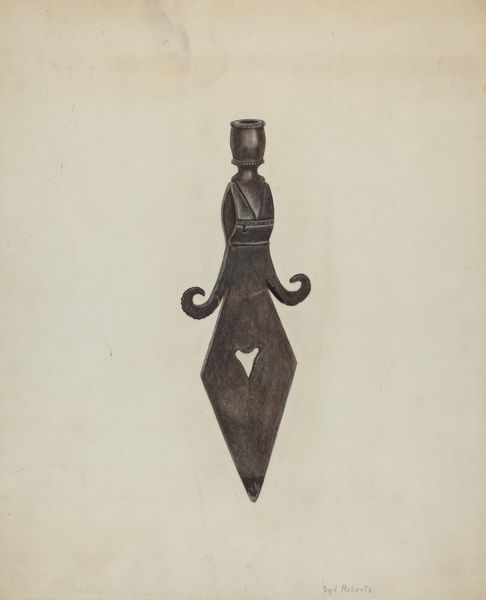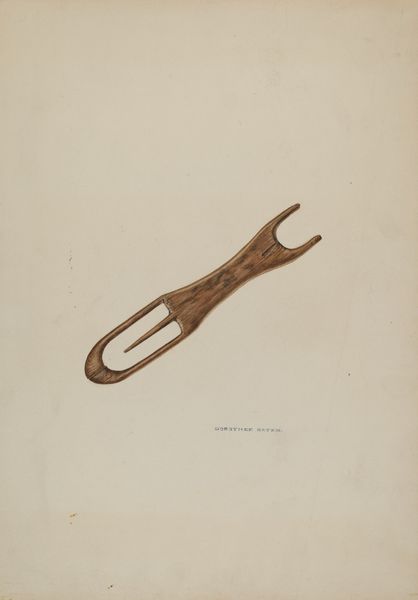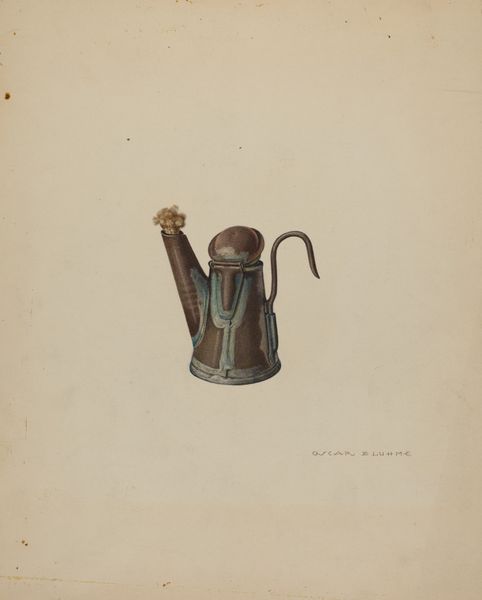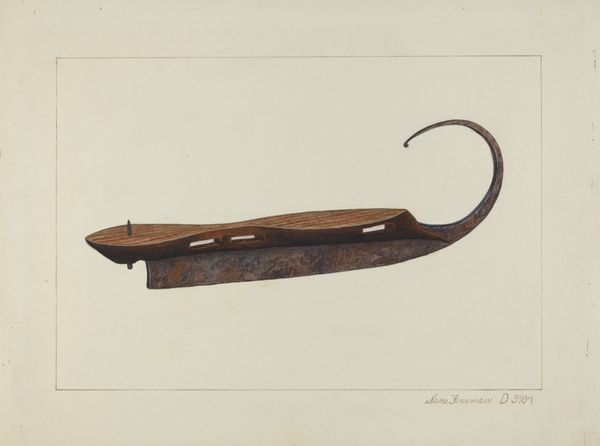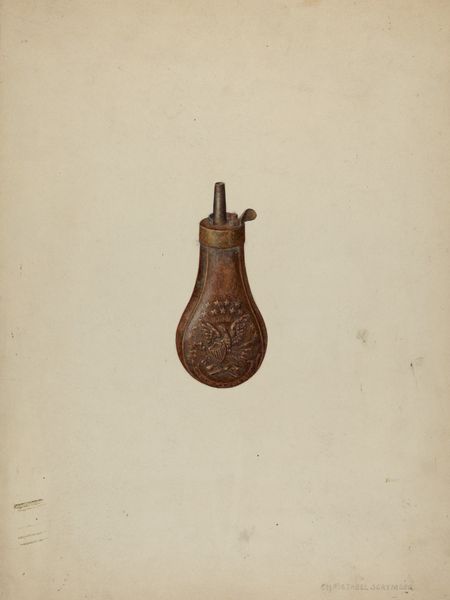
drawing
#
drawing
#
aged paper
#
toned paper
#
charcoal drawing
#
possibly oil pastel
#
charcoal art
#
underpainting
#
watercolour illustration
#
positive shape
#
watercolor
#
statue
Dimensions: overall: 27.9 x 22.9 cm (11 x 9 in.)
Copyright: National Gallery of Art: CC0 1.0
Editor: So, here we have Fritz Boehmer’s "Latch," from around 1939, a drawing using what seems to be charcoal and watercolor. I'm struck by the...ordinariness of the subject, yet it's rendered with such care. What do you see in this seemingly simple depiction? Curator: Well, it's easy to overlook the significance of the everyday. But Boehmer’s choice, I think, invites us to consider themes of access and exclusion during a very turbulent period. A latch is literally the point of entry. Who is being kept out, and who is welcomed in? Think about the sociopolitical climate of 1939 – the world on the brink of war, escalating discrimination, displacement. Editor: So, the "Latch" could be seen as a metaphor for broader social barriers? Curator: Precisely. And consider the material rendering. It’s not idealized. The depicted agedness implies history, wear, use. Is the welcoming genuine, or is there a superficiality to the welcome implied by its dilapidated condition? How does this reflect the artist’s experience? Consider, what does it mean for an artist, possibly marginalized by society, to focus on the very mechanisms of inclusion and exclusion? Editor: That gives me a whole new perspective. I was focused on the object itself. I hadn’t thought about the context and what the subject matter represented during that time. Curator: Art, at its most potent, compels us to ask: "For whom is this door open?" Editor: That makes the artwork incredibly thought-provoking! It transforms a common object into a powerful symbol of social commentary. I’ll definitely look at art with a different set of questions now.
Comments
No comments
Be the first to comment and join the conversation on the ultimate creative platform.
